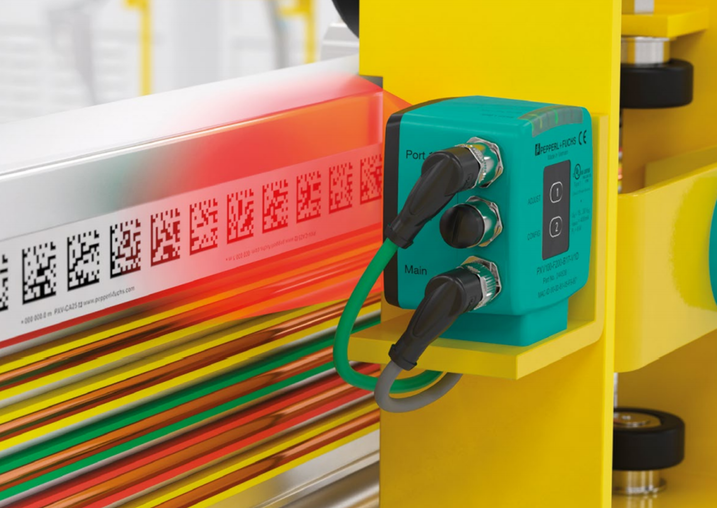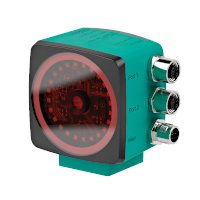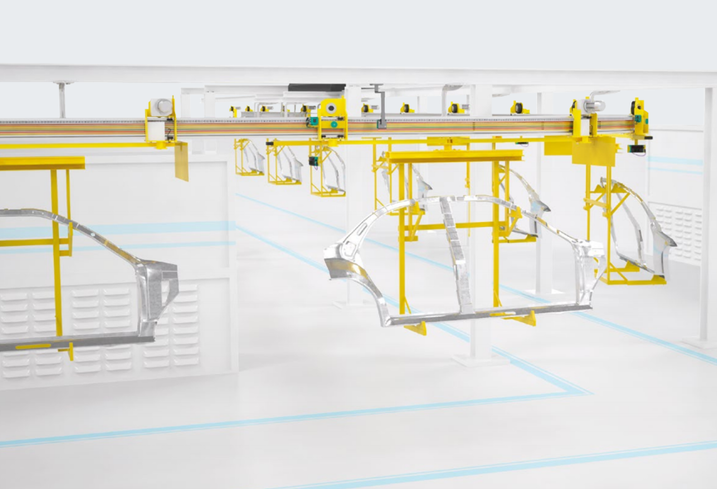PXV Absolute Positioning System for Reliable Positioning of Monorail Conveyors
PXV Absolute Positioning System in Automobile Production

The Application
Overhead monorail conveyors are used to transport production materials internally. They are popular in the automobile manufacturing sector, for example, where engines, drivetrains, vehicle doors, and entire car bodies are transported along a production line. A complete monorail conveyor system consists of a rail system and multiple monorail conveyor carriers. Using rails makes it possible to create flexible routes featuring both straight track elements with inclines and declines, to corners and junctions. The carriers move autonomously along the track and transport high loads reliably and safely. It is also possible to transport goods across several stories within a building. The carriers are equipped with their own sensors, a motor, and a control system. Power is supplied by a power rail.
The Goal

PXV absolute positioning system
The monorail conveyor must be 100 % fail-safe, since even a single carrier breaking down can lead to very high costs. The extremely high availability and low failure rates are necessary for just-in-time production in the automotive sector. To avoid downtimes due to collisions, the hangers must be positioned with absolute precision over complicated routes that cover long distances. The central control system must know the position of every carrier on the route at all times. This is the only way to ensure that production is transparent and help can be provided quickly in case of a fault.
The Solution

The PXV absolute positioning system, consisting of a read head and Data Matrix code tape, offers a precise solution. While the code tape is installed along the rail, the 2-D camera is located 100 mm away (with available tolerance) on the carrier itself. The 2-D camera outputs the absolute position of the carrier in relation to the glued-on Data Matrix code tape to the control system at all times. The 25 mm code tape is narrow enough to be easily mounted above the monorail conveyor’s power rail. With tracks measuring between 0 and 100 km in length, a position resolution of +/– 0.2 mm, and a travel speed of up to 8 m/s, the PXV technology is highly accurate to meet the requirements of absolute positioning over long, complex tracks.
Technical Feautures:
- +/– 0.2 mm precise measurement resolution up to a track length of 100 km
- Travel speed: 8 m/s
- Easy-to-install Data Matrix code tape
- Interfaces: RS485, SSI, EtherNet/IP, or PROFINET
- Noncontact and maintenance-free
- Safe version safePXV with SIL 3/PL e and PROFIsafe
The Advantages
The PXV system is quick and easy to set up and offers a high level of reliability without consequential costs for many years. While other technologies require calibration and maintenance intervals, neither are necessary in this system because there are no moving parts. To protect personnel and machinery, the safe version safePXV with PROFIsafe enables safe absolute positioning according to SIL 3/PL e with only one sensor.
At a Glance
- The best and most reliable absolute positioning system: unique combination of 2-D camera and Data Matrix code tape
- Highly flexible: noncontact positioning up to 100,000 m
- Total reliability due to multiple code redundancy even when soiled or damaged—one readable code required
- Quick installation using adhesive code tape: no need for exact camera orientation due to wide reading window and large depth of field









 +49 621 776-0
+49 621 776-0